Argentinian Beverages: Basic Overview
Common Ingredients
Common Preparing Methods
Drinking Etiquette
Influence and Fusion
Argentinian Beverages: Origin and Region
Cuisine
Culinary Region
Country’s Region
Classifications of Argentinian Beverages
-
Non-alcoholic Beverages
Have several traditional drinks made from special ingredients, like yerba mate leaves, carob, corn, and more.
-
Alcoholic Beverages
Renowned for their quality and variety, ranging from wine and beer to cocktails.
Argentinian beverages, from refreshing non-alcoholic drinks to robust alcoholic beverages, are a fascinating blend of tradition and innovation.
Characterized by unique ingredients like yerba mate, sugarcane, corn, and various fruits and spices, Argentinian drinks range from sweet and creamy to bold and aromatic.
The types of beverages span from traditional infusions and fermented drinks to modern cocktails and internationally acclaimed wines.
So what you will find here are 16 popular and traditional drinks in Argentina with the legal drinking age in the country. Additionally, you’ll know the art of pairing Argentine dishes with their perfect drinks to expertly match flavors and textures.
Wait no more, let’s dig in!
16 Best Argentinian Beverages
Following are 16 common Argentinian beverages, from alcoholic to non-alcoholic choices, from traditional, national drinks to popular street beverages. You can use the filter system to quickly find your favorites.
Yerba Mate
- Non-Alcoholic
- National
- Traditional
Yerba mate is a national drink and herbal infusion made from the leaves of the yerba mate plant. The leaves of the yerba mate plant are dried, chopped, and then steeped in hot water.
The bitter-yet-refreshing taste of yerba mate is a key part of locals’ daily lives, with an average person consuming over 100 liters annually. FYI, it’s called chimarrão in Brazil’s drinks.
Preparing and drinking yerba mate is a social ritual that strengthens bonds between people by passing the mate around and sipping together. It’s enjoyed from a hollowed gourd, called a “mate,” using a metal straw known as a “bombilla.”
Thanks to its high antioxidants and nutrients, yerba mate provides a natural energy boost similar to caffeine but without side effects. So, if you find yourself in the land of tango and churrasco, join a mate circle and experience this drink!
Coffee
- Non-Alcoholic
- National
- Traditional
In Argentina, coffee is more than just a beverage—it’s a cultural experience deeply rooted in European traditions. Unlike many coffee-loving countries, Argentina leans towards a strong, espresso-based style.
Buenos Aires, the capital, is renowned for its café culture, where historic cafés serve as social hubs. These cafés, such as the famous Café Tortoni, provide a cozy spot for relaxation and conversation.
In neighborhoods like Palermo, trendy coffee shops now serve high-quality, artisanal brews, including flat whites and pour-over coffees. Moreover, espresso-based coffee culture is heavily influenced by Italian drink culture, especially from immigrants who brought their love for coffee to the country.
Café con Leche
- Non-Alcoholic
- Traditional
Café con leche is a staple of Argentine coffee culture. It consists of equal parts strong coffee and hot milk, creating a smooth and balanced flavor. Café con leche is typically served in the morning or afternoon snack time, known as “merienda.”
In Argentina, enjoying a café con leche often means sitting in one of the many traditional cafés, savoring the drink alongside pastries like medialunas (sweet croissants). You can also find café con leche on the beverage menu in Uruguay.
Cortado
- Non-Alcoholic
- Traditional
In Argentina, cortado is another beloved coffee beverage with a perfect balance of strong espresso and a small amount of hot milk. This drink, meaning “cut” in Spanish, effectively cuts the espresso’s bitterness with just enough milk.
In fact, Cortado is a Spanish-origin beverage that reflects the Spanish influence on Argentine coffee culture. Cortado is typically served in a small glass, which you find in many Argentine cafés. This coffee drink is enjoyed by locals throughout the day, often accompanied by a small, sweet pastry.
Malbec
- Alcoholic
- National
- Traditional
Malbec is Argentina’s most famous red wine, which has rich, fruity flavors and a deep color. Malbec is also a national drink here.
Originally from France, Malbec found its ideal growing conditions in Argentina’s Mendoza region, which is also the country’s leading producer of this wine (with 83,680 acres of vineyards).
This environment helps develop the wine’s distinctive taste, having notes of blackberry, plum, and a hint of spice. This wine pairs well with the country’s famous meat dishes, making it a favorite at asados (barbecues) in Argentina.
Torrontés
- Alcoholic
- National
- Traditional
Torrontés is Argentina’s signature white wine, known for its fruity and floral notes. The grapes make Torrontés wine, which is primarily grown in the high-altitude vineyards of the Cafayate Valley in Salta.
Torrontés wines are known for their explosion of floral and fruity aromas – think rose, jasmine, white peach, and apricot. Despite the scent, these wines are surprisingly dry and refreshing, with a balanced acidity that keeps them light on the palate.
To pair with food, Torrontés complements seafood and spicy dishes beautifully.
Fernet con Coca
- Alcoholic
- Fusion
- National
In Argentina, Fernet con Coca is the country’s national cocktail mixing Fernet-Branca, a bitter Italian amaro liqueur, with Coca-Cola. That’s why it has a surprising balance of sweet and bitter flavors.
Served in a highball glass over ice, Fernet con Coca is a popular choice for after-dinner drinks or late-night gatherings.
This drink also reflects its social traditions, as sharing a Fernet con Coca is often seen as a gesture of camaraderie and friendship.
Quilmes
- Alcoholic
- National
Quilmes is the most popular beer in Argentina, thanks to its crisp and refreshing taste. Established in 1888, the brewery, named after the indigenous Quilmes people, is based in Buenos Aires.
It produces a variety of beers, with Quilmes Cristal being the most popular. This beer company also has 75% of the beer market share in Argentina.
Quilmes has a light, slightly bitter flavor that pairs well with Argentina’s diverse cuisine. It’s also a staple at social gatherings and asados across the country.
Clericó
- Alcoholic
- Traditional
Clericó is a popular alcoholic fruit punch traditionally enjoyed in Argentina, especially during the summer and festive occasions.
Clericó is made by mixing white wine with chopped fruits such as apples, oranges, bananas, and peaches, similar to sangria. The fruits are often soaked in the wine for several hours to enhance the flavors, and sometimes soda or fruit juice is added to give it a fizzy touch.
Clericó is particularly popular in the country’s northern regions, which feature a warm climate. So, it’s best to serve chilled.
Hesperidina
- Alcoholic
- National
- Traditional
Hesperidina is a historic and national Argentine orange-flavored aperitif, created in 1864 by American immigrant Melville Sewell Bagley.
Hesperidina is crafted from the peels of sweet and bitter oranges, providing a citrus flavor with herbal undertones. Often enjoyed on its own, mixed with tonic water, or as a cocktail ingredient, Hesperidina remains a popular choice.
Plus, it’s the first product to receive a registered trademark in Argentina.
El Submarino
- Non-Alcoholic
- Street Beverages
- Traditional
Argentina offers a tasty twist on classic hot chocolate with el submarino, literally translating to “the submarine.” El submarino is a comforting drink where a chocolate bar is melted in hot milk.
In a mug of hot milk, a thick bar of dark chocolate is submerged, resembling a submarine. As the chocolate melts, it infuses the milk with a rich, chocolaty flavor. Some variations include adding whipped cream or marshmallows.
Overall, el submarino is perfect for chilly evenings and winters.
Dulce de Leche Liqueur
- Alcoholic
- National
Dulce de leche liqueur is Argentina’s sweet spirit with the essence of caramel spread.
Made with creamy dulce de leche and the chosen alcohol, this liqueur offers a smooth texture and rich caramel notes with a subtle sweetness. Various types of alcohol can be used as the base, but the most common include vodka and rum.
Dulce de leche liqueur is an ideal after-dinner drink that you can enjoy alone or incorporate into cocktails
Amargo Obrero
- Alcoholic
- Traditional
Amargo Obrero is a traditional Argentine bitter liqueur, first produced in 1887 by Italian immigrants in Rosario. This drink has a dark brown color and a distinctive herbal, almost licorice-like flavor.
Amargo Obrero is often enjoyed with soda water, tonic, or used in cocktails. This bitter liqueur quickly became popular among the working class as an alternative to the sweet drinks favored by the upper classes.
In fact, the name “Amargo Obrero” translates to “Worker’s Bitter,” reflecting its roots in the labor movement and its widespread appeal among the common people. Today, it has earned recognition as one of the best aperitifs in the world.
Aloja de Chaucha
- Alcoholic
- Exotic
- Traditional
Aloja de Chaucha is a traditional alcoholic beverage from northwest Argentina and the Chaco region. It is made by fermenting the fruit of the carob tree.
The preparation involves crushing ripe carob pods to create a paste, which is then mixed with water and left to ferment in a dark place for several days to two weeks. This process produces a drink with a pleasant taste and variable alcohol content, depending on the fermentation time.
Despite its long history, the drink is not commonly found in commercial markets and is typically made for personal or community consumption.
Aloja de Chaucha is especially common during the Fiesta del Chiqui, a traditional celebration in La Rioja and Catamarca provinces.
Patagonia Beer
- Alcoholic
- National
Patagonia beer, brewed in Bariloche, Argentina, has become one of the country’s famous craft beers. Patagonia beer has several styles, including Bohemian Pilsner, Amber Lager, and IPA.
The brewery’s use of pure mountain water from the Andes contributes to the crisp, refreshing taste of their beers.
FYI, Bariloche, often called the “Craft Beer Capital” of Argentina, hosts numerous beer festivals, such as the annual Fiesta de la Cerveza Artesanal. So, if your favorite drink is craft beer, don’t miss out on this beer.
Caña
- Alcoholic
- Traditional
Caña is a potent distilled beverage, a type of rum, produced by fermenting and aging sugarcane juice. Unlike its Caribbean cousins known for sweetness, Argentine Caña leans drier and more subtle. Often aged in oak barrels, it develops a smooth character with hints of vanilla and caramel.
Caña is often consumed in rural areas. You can enjoy it in various ways, like sipping it neat to appreciate its clean flavor profile or mixing it into cocktails. Caña is also a key ingredient in the iconic Argentine drink “Trago de Pomelo.”
What Age Can You Drink in Argentina?
In Argentina, the legal drinking age is 18. This applies to both purchasing and consuming alcoholic beverages.
This regulation aims to manage and moderate alcohol consumption among young people and to align with international standards.
Following up, you’ll find some perfect duos for matching drinks with dishes in Argentinian cuisine.
What Are Typical Pairings of Dishes or Foods with Beverages in Argentina?
Below are 5 ideal pairing examples highlighting Argentine cuisine’s delights and drinks versatility and richness.
Asado (Argentine barbecue)
Pair well with Malbec because the rich, full-bodied flavors of Malbec pair perfectly with the smoky, savory flavors of grilled meats. Malbec’s acidity and tannins help cut through the fat as well.
Medialuna (Argentinian croissants)
Pair well with yerba mate because yerba mate’s bitter, earthy flavor complements the sweetness of pastries and cookies, making it a popular breakfast or snack pairing.
Seafood, spicy dishes, and salads
Pair well with Torrontés because the aromatic and floral notes of Torrontés, along with its crisp acidity, balance out the heat of spicy dishes and match well with seafood and salads.
Locro, empanadas, and humitas
Pair well with chicha because the slightly sweet of chicha complements the hearty and savory notes of these delights.
Aperitifs, citrus-based desserts
Pair well with Hesperidina because the orange-flavored aperitif pairs well with light starters and citrus-based desserts, improving the flavors with its sweet and tangy profile.
Lastly, did you find a new favorite drink from Argentina? Share your thoughts in the comments, like, and don’t forget to share with your friends. Thank you so much!







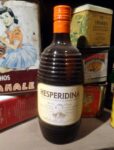
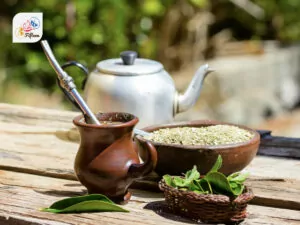





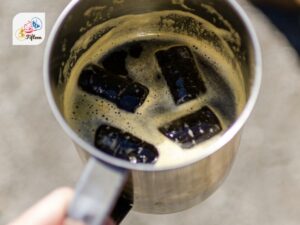

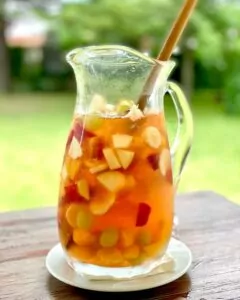
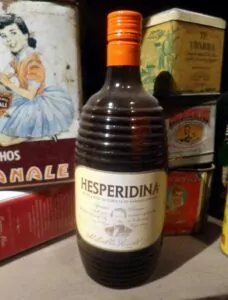


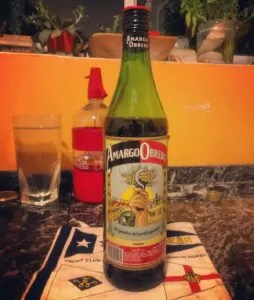
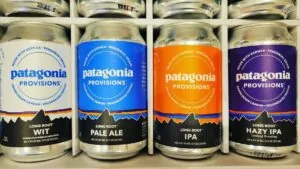


Jamie Scott
Editor in Chief, Senior Content Writer
Expertise
Home Cooking, Meal Planning, Recipe Development, Baking and Pastry, Food Editor, Cooking-video Maker, Western Food Evaluation Expert
Education
Le Cordon Bleu College of Culinary Arts
Local Community College, New York, NY
Jamie Scott is a skilled culinary expert and content creator specializing in Western cuisine. With over 15 years in the culinary field and formal training from Le Cordon Bleu, Paris, Jamie deeply understands how to blend nutrition with delicious flavors. His passion for cooking matches his commitment to making healthy eating accessible and enjoyable.
On Fifteen.net, Jamie brings a fresh perspective to classic dishes and beverages, offering readers insightful recipes, cooking tips, and a fresh view on meal planning that emphasizes taste, health, and simplicity.